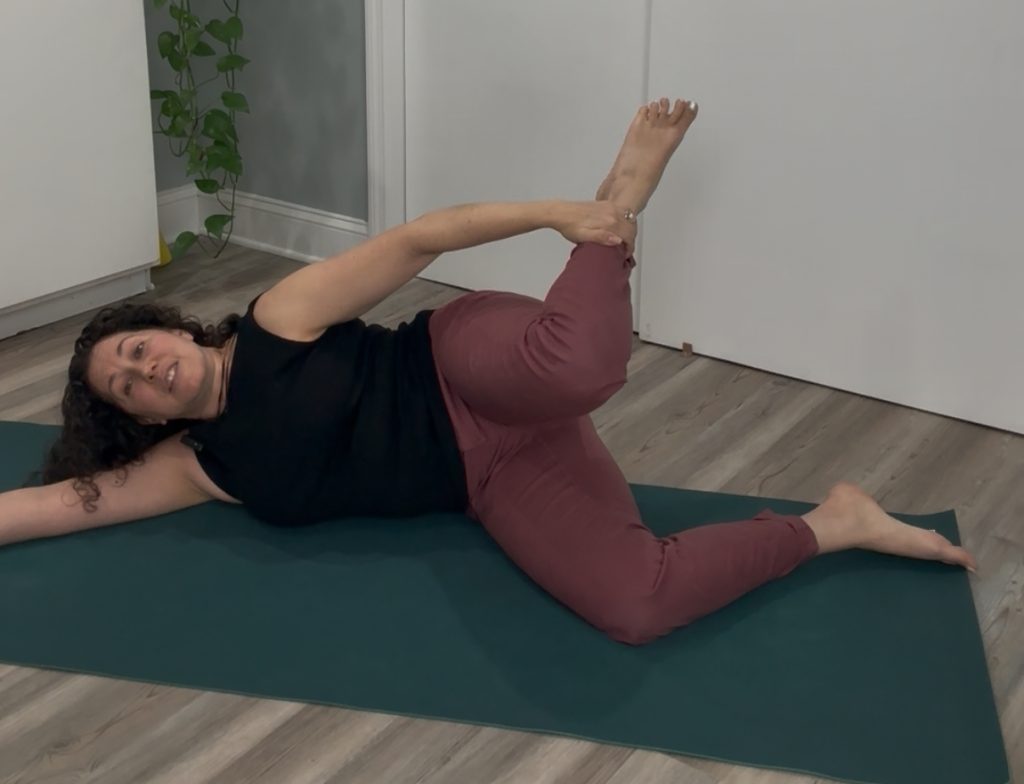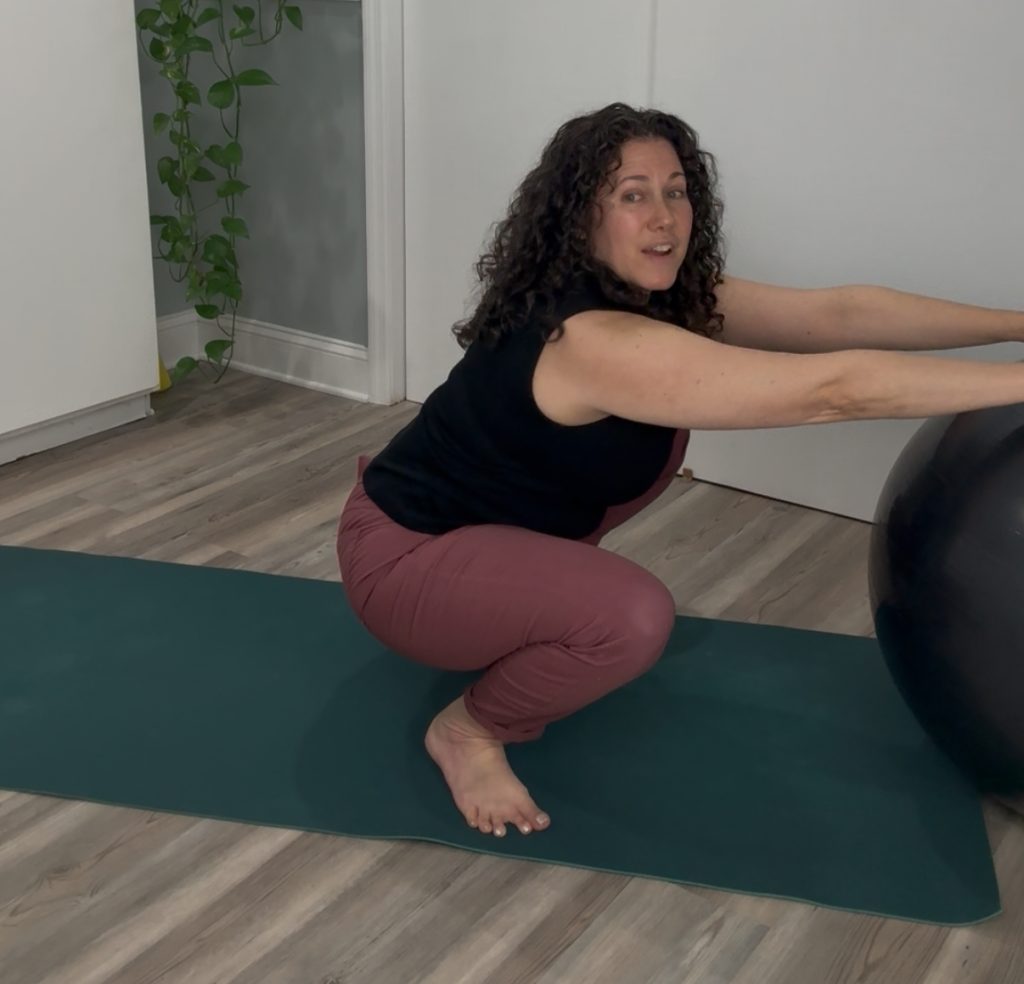Navigation
- Your Pelvis isn’t Fixed- It Moves!
- Creating Space During Pushing : What Are Your Options
- Final Thoughts: Confidence and Communication
- Helpful Resources
Worrying if your baby will fit through your pelvis incredibly understandable, but here’s something that might bring you peace of mind: true cephalopelvic disproportion (CPD), where a baby physically cannot fit through the pelvis, is extremely rare. In fact, it only affects about 1 in every 250 births.
So the odds are very much in your favor—and there are actually things you can do during pregnancy and labor to create more space in your pelvis and feel more confident in your ability to give birth.
Let’s break this down a bit and talk about how your pelvis works and what positions you can explore during pushing to make the most room for your baby.
Your Pelvis Isn’t Fixed—It Moves!
The pelvis is often thought of as one solid structure, but that’s not quite accurate. It’s made up of several bones and joints that have mobility, especially thanks to the hormone relaxin, which softens ligaments during pregnancy. This mobility can work in your favor during birth—especially during the pushing stage.
One key movement we want to encourage during pushing is nutation of the sacrum. This is when the top of the sacrum tips forward and the tailbone shifts back. Why does this matter? Because nutation helps create more space in the pelvic outlet, which is the exit route your baby takes during birth. When the tailbone moves back, there’s more room between the sacrum and the pubic bone—exactly where your baby needs to go.
Creating Space During Pushing: What Are Your Options?
Let’s talk about how to work with your body—not against it—during the pushing stage. Certain positions naturally encourage nutation of the sacrum, allowing for more space and potentially an easier descent for baby. And yes, many of these positions can be used even if you have an epidural!
On Your Back—with a Little Lift

While pushing on your back is very common in hospital births, it tends to flatten the sacrum and restrict movement. But there’s a simple trick that can make a big difference.
Roll up two small washcloths (about ½ to 1 inch in thickness), secure the ends with rubber bands, and place one under each side of your pelvis—right where your sitting bones are. These little lifts act as a platform, elevating the pelvis just enough to free the sacrum to nutate.
Even with an epidural, this adjustment can help open the pelvic outlet. Want to create even more space? Try internally rotating your thighs—simply turn your knees slightly inward. This can widen the sit bones and make even more room.

Side-Lying with Internal Rotation
Another great, epidural-friendly position is lying on your side. In this posture, the sacrum is free to move, and you can easily add internal rotation of the top leg by gently angling your knee downward.
This creates more width between the sit bones and helps open the pelvic outlet. Bonus: it’s a comfortable, restful position for long labors, and easy to support with pillows or your birth partner.

Hands-and-Knees or All Fours
If you’re able to move into a hands-and-knees position—especially with the help of your support team—this can be a wonderful way to maximize pelvic mobility. Many hospital beds are adjustable, so you can face the raised head of the bed and reach your arms up to the top.
This reaching action isn’t just for comfort. Lifting your arms activates the latissimus dorsi muscles, which connect to the thoracolumbar fascia and indirectly to the sacrum. This gentle tension helps to encourage nutation of the sacrum.
And don’t forget—you can still bring in internal rotation here by turning your ankles outward slightly. That little movement helps to further open the outlet.

Using a Squat Bar
Many hospital beds come equipped with a squat bar, so ask your provider or nurse if this is available. During a contraction, you can grab the bar and come into a squat, then sit back to rest between contractions.
Squatting deeply brings your legs into flexion and allows the sacrum to move freely. It also uses gravity to your advantage and widens the pelvic outlet—a fantastic combination for encouraging descent and rotation of your baby.
Final Thoughts: Confidence and Communication
Seeing the variety of ways you can support pelvic mobility and create more space during pushing can be incredibly empowering. Your body was designed for this, and understanding how to work with your anatomy can help make the experience smoother.
One last suggestion: have a conversation with your care provider ahead of time about your preferences for pushing positions. Sometimes providers say you can push in “any position,” but when the time comes, they default to back-lying to make it easier to “catch” the baby. Clear communication in advance can help ensure that your preferences are respected and supported.
You’ve got this—and your pelvis likely has more than enough room to birth your baby.
To learn more about the Prenatal Yoga Center and the classes that we offer. Click below to view our class schedule.
Helpful resources
Podcast: How Understanding the Biomechanics of Your Pelvis Can Help Your Birth with Brittany Sharpe McCollum
Podcast: Why Some Babies Fly Out and Some Stall with Lindsay McCoy
Yoga and Exercises to Widen Your Pelvis for Birth
Source
America Pregnancy Association; Cephalopelvic Disproportion (CPD)







